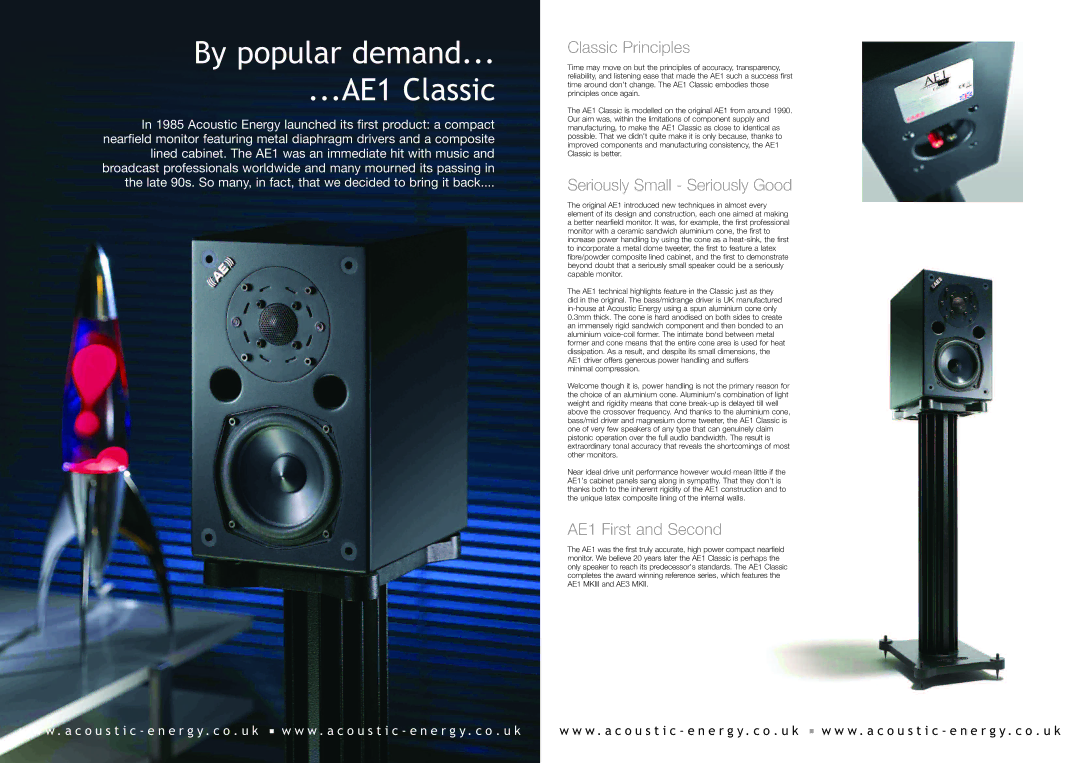
By popular demand...
...AE1 Classic
In 1985 Acoustic Energy launched its first product: a compact nearfield monitor featuring metal diaphragm drivers and a composite lined cabinet. The AE1 was an immediate hit with music and broadcast professionals worldwide and many mourned its passing in the late 90s. So many, in fact, that we decided to bring it back....
Classic Principles
Time may move on but the principles of accuracy, transparency, reliability, and listening ease that made the AE1 such a success first time around don't change. The AE1 Classic embodies those principles once again.
The AE1 Classic is modelled on the original AE1 from around 1990. Our aim was, within the limitations of component supply and manufacturing, to make the AE1 Classic as close to identical as possible. That we didn't quite make it is only because, thanks to improved components and manufacturing consistency, the AE1 Classic is better.
Seriously Small - Seriously Good
The original AE1 introduced new techniques in almost every element of its design and construction, each one aimed at making a better nearfield monitor. It was, for example, the first professional monitor with a ceramic sandwich aluminium cone, the first to increase power handling by using the cone as a
The AE1 technical highlights feature in the Classic just as they did in the original. The bass/midrange driver is UK manufactured
minimal compression.
Welcome though it is, power handling is not the primary reason for the choice of an aluminium cone. Aluminium's combination of light weight and rigidity means that cone
Near ideal drive unit performance however would mean little if the AE1's cabinet panels sang along in sympathy. That they don't is thanks both to the inherent rigidity of the AE1 construction and to the unique latex composite lining of the internal walls.
AE1 First and Second
The AE1 was the first truly accurate, high power compact nearfield monitor. We believe 20 years later the AE1 Classic is perhaps the only speaker to reach its predecessor's standards. The AE1 Classic completes the award winning reference series, which features the AE1 MKIII and AE3 MKII.
w w w . a c o u s t i c - e n e r g y . c o . u k | ■ | w w w . a c o u s t i c - e n e r g y . c o . u k | w w w . a c o u s t i c - e n e r g y . c o . u k | ■ | w w w . a c o u s t i c - e n e r g y . c o . u k |
